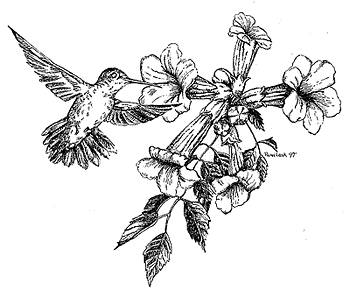
   |
 |
|
|
|
To Feed A Hummingbird Four species of hummingbirds are found in Nebraska, one in the east and three in the west. Ruby-throated hummingbirds migrate through eastern Nebraska in spring and fall, and some nest here, mostly along the Missouri river valley. Typically, ruby-throat migration in Nebraska peaks about May 5-17 and September 2-18, but northward migration may occur from April to June and southward flights from August to early October. Broad-tailed and rufous hummingbirds are seen in the Nebraska panhandle during fall migration from late July to early September with most sightings in early to mid-August. Calliope hummingbirds are seen rarely in the panhandle area. These four hummingbird species spend winter in Mexico and Central America. What They EatThe natural diet of hummers is flower nectar, tree sap, and small insects and spiders that are often captured in or near flowers. This natural diet can be supplemented by hummingbird feeders, which dispense a sugar water solution. Flowers blooming through the season, however, are needed when hummingbirds are present to attract them and to provide the natural foods required for a complete diet. Planting for Hummingbirds
Flowers add beauty and a place where hummingbirds can find both flower nectar and insects to eat. Table I lists recommended herbaceous plants that can provide a variety of flowers for hummingbirds when they are present in your rural or urban community. These landscape plants provide beauty as well as a natural foraging area where hummingbirds can find both flower nectar and small insects to eat. Select plants that provide flowers throughout the season, especially at times when you expect hummingbirds. Include red varieties of the plants listed because red tubular flowers appear to be especially attractive to hummingbirds. Some of the plants listed occur both as wildflowers and as cultivated varieties. Where these wildflowers are growing naturally, maintaining them can benefit hummingbirds. For planting, check with nurseries for availability of either wildflowers or cultivated varieties. Trees and shrubs form the framework of your landscape and these also can benefit hummingbirds. Common flowering shrubs favored by hummingbirds include Coralberry (Symphoricarpos orbiculatus and other species), Weigela (Weigela florida), and Rose-of-Sharon (Hibiscus syriacus). Other shrubs used include Honeysuckle (Lonicera spp.), Beauty Bush (Kolkwitzia amabilis), Currant (Ribes odoratum), and Gooseberry (Ribes speciosum). Trees used by hummingbirds include Flowering Crab (Malus spp.), Hawthorne (Crataegus spp.), Horsechestnut (Aesculus hippocastanum), Tuliptree (Liriodendron tulipifera), and Black Locust (Robinia pseudoacacia). In maintaining flowering plants, it's best to avoid insecticide use around the flowers, because hummingbirds depend on small insects as part of their diet. Nectar Feeding
Commercial "nectar" solutions for hummingbirds can be purchased or easily made by mixing one part granulated white sugar (common table variety) with four parts water. For example, mix 1/4 cup sugar with one cup water. Boil the water, dissolve the sugar, then allow to cool before filling the feeder. Keep leftover portions refrigerated until needed. Change the mix every few days, more often in hot weather, and clean the feeder each time before refilling to prevent molds that can harm the birds. Feeders can be cleaned by either rinsing with hot water, filling with vinegar and uncooked rice and shaking vigorously, or soaking the feeder in a solution of two ounces household bleach mixed with one gallon of water. A stiff bottle brush may help but avoid soaps because residues may interfere with the capillary action of the feeder. When selecting a hummingbird feeder, look for one that's easy to fill and clean and without too many nooks and crannies. Some red on the feeder is desirable because it seems to attract hummingbirds, and bee guards (grids or screens) over the feeding ports help discourage bees. Hang the feeder from a tree branch or on a deck or porch, preferably in partial shade, near flowers, and out of the wind. Consider using more than one feeder to prevent an aggressive male hummingbird from dominating and to add viewing opportunities. For example, place a feeder near your hummingbird flowers and another closer to your home or viewing windows. Place feeders out in time for expected arrivals and continue until hummingbirds migrate on. More Feeding TipsAvoid honey mixtures for feeding because there is increased potential for spoilage and harmful molds. Also, avoid red food coloring; the red tip or plastic flower on the feeding spout is sufficient and there is some concern that the food coloring might be harmful. If your feeder doesn't have red, you can add a red plastic flower, red ribbon, red tape, or even red nail polish on the surface of feeding ports. To prevent ants from coming to the feeder, keep the outside clean and, if needed, coat the feeder hanger or the spout with salad oil or petroleum jelly. To deter bees, some feeders have bee guards, and another possible approach is to repel bees by rubbing Avon Skin-so-soft® or Off Skintastic® onto the feeder surface by the feeder ports. To help attract small insects eaten by hummingbirds, hang an overripe banana peal or cantaloupe near the feeder; a mesh produce sack makes a convenient holder. Finally, to benefit hummingbirds, use all pesticides wisely and only when needed. And minimize insecticide use, especially around flowers, because hummingbirds depend on small insects as part of their diet. Table I. Herbaceous plants that attract hummingbirds
For More Information
|
 HummerDome-8 oz
HummerDome-8 oz
Description: Constructed of super-tough polycarbonate with sold brass fittings, the HummerDome can stand up to years of abuse, is UV resistant, and can be easily cleaned in your dishwasher. This feeder can be used with any type seed, fruit, bread-crumbs, mealworms, and/or just about every type of nectar available. Attracts birds year round and is easy to fill and clean. Comes with cleaning brush. Polycarbonate dome, built-in ant guard, leak proof, and bee proof. Generous 8 oz capacity. |
 Hummerfest Hummingbird Feeder-12 oz.
Hummerfest Hummingbird Feeder-12 oz.
Description: The 12 oz. Hummerfest Hummingbird Feeder is a complete feeder kit designed to complement the backyard of any nature enthusiast. Made of a dishwasher safe, high-impact polycarbonate, the 12 oz. Hummerfest with built-in ant moat. Lifetime Guarantee. Dimensions: 8-3/4" W x 8" H |
 Hummerfest Hummingbird Feeder-8 oz.
Hummerfest Hummingbird Feeder-8 oz.
Description: The 8 oz. Hummerfest Hummingbird Feeder is a complete feeder kit designed to complement the backyard of any nature enthusiast. Made of a dishwasher safe, high-impact polycarbonate, the 8 oz. Hummerfest with built-in ant moat and rain deflectors, also comes with a post cleaning brush and a post mount ant moat. Lifetime Guarantee. Dimensions: 8-3/4" W x 8" H |
 Nectar Pot
Nectar Pot
Description: Comes with 3 interchangable colored knobs to identify which nectar is stored. Heat it, pour it, and store it. 2 liter. |
 Window-Mount Hummingbird Feeder-16 oz.
Window-Mount Hummingbird Feeder-16 oz.
Description: Molded from durable poly-carbonate. Includes built-in ant moat, window bracket and feeder. Can be used as a window seed feeder when not dispensing nectar. Comes with a one year warranty. |
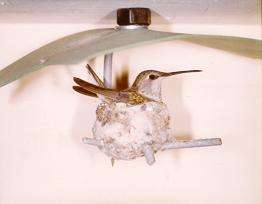 Hummingbird House
Hummingbird House
The Hummingbird House* kit includes instructions, plus a small bundle of natural cotton for the mom-to-be hummer to gather material from to use in building her nest. When you observe her taking fluffs of cotton, you know her nest building is in progress. |
 Perky Pet Brand - Hummingbird Feeder Pinch Waist 210P
Perky Pet Brand - Hummingbird Feeder Pinch Waist 210P
8-ounce capacity; bee guards; without perches. $11.49 |
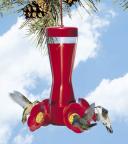 Perky Pet Brand Hummingbird Feeder 8oz Glass 203-C
Perky Pet Brand Hummingbird Feeder 8oz Glass 203-C
8-ounce capacity; bee guards; without perches. $11.49 |
 Perky Pet Brand Hummingbird Feeder Our Best P209
Perky Pet Brand Hummingbird Feeder Our Best P209
|
 Perky Pet Brand Hummingbird Feeders Planter 215
Perky Pet Brand Hummingbird Feeders Planter 215 |
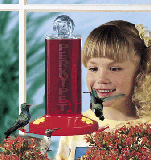 Perky Pet Brand Window Hummingbird Feeder
Perky Pet Brand Window Hummingbird FeederEasy to clean wide-mouth design Attaches to window, wall or post for an exciting way to watch hummingbirds feed. 8 oz. capacity, 2 feeding stations & perches. |
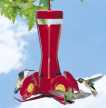 Perky Pet's Hummingbird Feeder 8oz Glass 203-CP
Perky Pet's Hummingbird Feeder 8oz Glass 203-CP
8-ounce capacity; bee guards; 4-way perch. $12.49 |
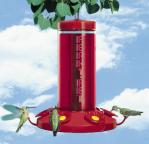 Perky Pets Brand Hummingbird Feeders Grand Master 220
Perky Pets Brand Hummingbird Feeders Grand Master 220 |
|
Ads If you are not interested in phone case , then you have already missed a lot. |

Home
Page |
Product Review Page | Help
 Woodside Gardens
The Registry of Nature Habitats
Woodside Gardens
The Registry of Nature Habitats 
 1999 -
1999 -
All Rights Reserved
Last Updated:
